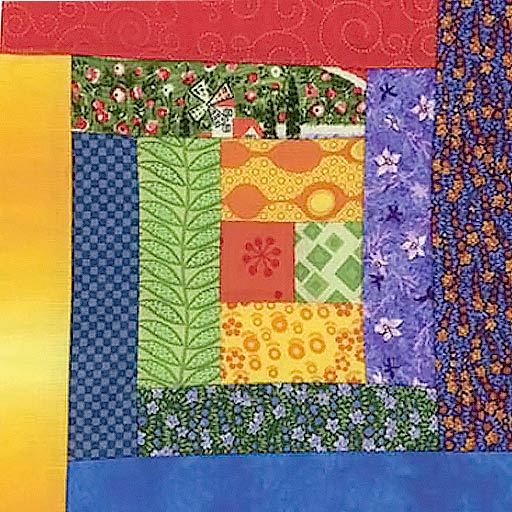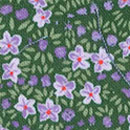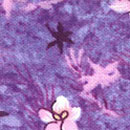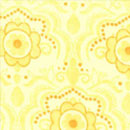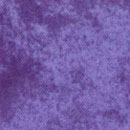Diversity is as big as the universe
by Tom Atlee
Diversity is difference. It is a natural phenomenon, intimately related to uniqueness and identity. There is a rich world of discovery awaiting us when we are ready to fully encounter our diversity. But first we have to lift our heads above the bustle around us and look at the big picture.
As important as it is to have women executives and people of other races in our neighborhoods, diversity is way, way bigger than that.
Our use of the word “diversity” primarily to address issues of racism, classism, sexism, and other oppressive isms has blinded us to the fact that diversity is a vast fact of life, deeply embedded not only in humanity but in natural systems and in the very fabric of the universe.
Diversity, like fire and genius, can be problematic. And like fire and genius, diversity has creative power we can use to make life better.
Co-intelligence is largely about using diversity creatively. Understanding diversity is an important part of working consciously with co-intelligence.
This article is an exploration of how big diversity actually is…
Diversity is a fundamental property of the universe, along with matter, energy, space, time, relationship, unity, and many other phenomena that are present everywhere. Everything that you see (or don’t see) that is different from anything else — and every difference between them — is an aspect of diversity.
So diversity exists. Everywhere. It is a fact of life.
But there’s more to it than that.
Diversity makes life interesting. “Variety is the spice of life.” If every house on the block looked the same, if every restaurant served the same food, if everyone talked at us for hours in a monotone about things we already knew — well, then life just wouldn’t have much aliveness, would it? I have a funny feeling some of us would do something about that…
Think diversity.
Diversity makes whole systems possible: You need diverse parts to make a bicycle. A barrel of handlebars won’t do the job. Likewise, an ecosystem is made up of diverse species, making up complex food chains and cycles that keep the whole thing going.
Relationship, community, interdependence, mutuality — even the entire economic system with all its different jobs and products and services and forms of exchange — are all totally dependent on diversity.
As is freedom. Uniqueness is the inside face of diversity. If I want to “be myself” and “do things my way,” I have to live in a culture that respects diversity. The more free a society, the more diversity it tends to generate. And that diversity tends to beget even more diversity as diverse people, stimulated by each other, find new ways to be unique…
Diversity is key to resilience. “Diversify,” say the investment counsellors. If one variety fails, life can switch to another. This is the principle behind biodiversity: If all our corn is genetically identical, and a virulent bug attacks it, it may all be killed off. If our corn is genetically diverse, then some of it will succumb and some will survive. The survivors will reproduce, resulting in greater resistance to that bug. (Of course this natural selection process is busily at work on the bugs, too, so the dance goes on. But for any given species, its diversity — and the diversity of the organisms and systems it depends on — is a vital factor in its survival.)
If everyone depends on one mega-corporation for a monopolized product… If everyone uses the same operating system for their computers… If all the production facilities use the single most efficient form of production… If all the ferries are put out of business so all traffic must go on the bridges… If we all get our electricity from a single grid with no distributed local energy sources…. we make ourselves vulnerable to the collapse of the single things we all depend on. This is what freaked people out about Y2K, that it would knock out some basic central systems, triggering a catastrophic domino effect. This is a nightmare for terrorist emergency response planners, that terrorists could knock out some vital link in some technological system that we all depend on, for which there is no good alternative. Alternatives, diversity — even redundance — are key to resilience.
Diversity has many other roles, as well. Perhaps the most important is that it makes synergy dynamic. Three metal bars welded together into a triangle are stronger (more synergistic) than three metal bars welded into any other shape. That’s why engineers use steel triangles to build bridges and industrial support structures. But that’s static synergy. If you want to see dynamic synergy, check out the conversations between scientists like Albert Einstein and Niels Bohr, or any other people passionate about a subject, who have different views but share a dedication to finding greater truth. Since each sees things from a different perspective, they can see each other’s blind spots and evolve together into bigger, clearer ways of seeing the world.
Or you can simply contemplate the synergy between your lungs and your heart, or between oxygen-breathing animals and carbon-dioxide breathing plants, or between musicians in a jazz combo, jamming… The synergy in all these cases is dynamic and alive, thanks to the diverse participants in the dance.
Among us humans, diversity is virtually infinite. A good long list of characteristics is provided in an article on “Human Diversity.” Our diversity is a resource. In particular, we can tap our diverse strengths — skills, aptitudes, forms of intelligence, experience — in ways that make us much more powerful than we could ever be separately.
This is a fundamental principle of modern social organization: Make a lot of diverse specialists, producers and consumers and then connect them up to exchange information, services and products. The “invisible hand” of interlinked diversity in economic systems works by itself — although if you don’t design it right, it can have enough of the wrong kind of power and momentum to destroy a planet!
In short: Diversity has creative potential in it. The key is using diversity well. That’s one of the defining characteristics of co-intelligence — using diversity creatively.
OK. So that’s the bright side of diversity. Now let’s take a look at the all-too-familiar dark side.
Diversity is about differences. Diversity all too often means dissonance — discomfort, dissent, disagreement, conflict, polarization, battles — even oppression, war, terrorism and genocide. The list of horrors is enough to make some of us cringe back into polite (or even enforced) conformity and homogeneity.
One of the saddest facts of our human history is our use of our differences to disrespect and oppress one another. Not only has this produced a depth and breadth of human suffering that is hard to comprehend and heal, but it has eclipsed all other forms of human diversity. Today, when someone says “diversity,” most people think of different races, different genders, different classes, different sexual preferences — all the differences that have been used oppressively. Few realize that the diversity within any of these classes (women, black people, people of wealth) far exceed their similarities. And even fewer realize that those eclipsed differences are where the greatest potential synergies lie, to help us have thriving communities and a surviving civilization.
This is the legacy we face from attempts to establish usually (but not always) light-skinned heterosexual cultures dominated by property-owning men. We are thankfully breaking out of that, with great energy and at great cost. As we move through that cultural task, we need to expand our consciousness to embrace our full diversity.
Efforts at sameness are doomed to failure. The seeming comfort of conformity and homogeneity (which only masquerade as unity) tends to undermine co-intelligence. The synergy and potential — described above — are lost. The dragons of dissonance that we banish to netherworlds have a habit of surfacing again elsewhere, at other times, with even greater inconvenience and destructiveness and even more terrifying roars.
So what do we do?
Ultimately the creative use of diversity involves having some kind of common ground to stand on while exploring difficult differences. One of the most dependable forms of common ground is what I sometimes call our “core commons” — that place in all of us that is rooted in our shared humanity, our shared aliveness, our shared spirit.
Whether through our own personal development, through good group process (helped perhaps by facilitators or mediators), or through fortunate religious or cultural conditioning, we may be able to see each other through our differences to the depths of our commonality. When this is done in healthy ways, it isn’t done to deny our differences, but to maintain heartful, mindful pathways between us as we seek to understand our differences and their role in what comes next. We want our differences to make us powerful partners, not aliens and enemies.
Other forms of common ground include shared goals, visions, values, passions and purposes — or shared crises that render all other factors miniscule in comparison. Shared history, culture and language can make it much easier to work through differences, as can being together in the same place.
There are many other forms of common ground, as well. But nothing can replace really listening to each other — hearing each other’s stories, thoughts and feelings — in the faith that we are all trying to do what makes sense to us, at some level, and that we can ultimately understand each other’s diverse ways of making sense. Sometimes it takes a third party, a “designated listener” (mediator, facilitator, counsellor, diplomat) to make such a deep hearing possible. And so we find and train and become such people because real listening is likely to make all the difference in the world.
And as we become more skilled, we find ourselves able to bring together the torn fragments of our communities and societies. We realize that for the healing to happen it need not unfold within and among every single individual. The healing can happen — to a surprising degree — among the differences themselves, archetypally and publicly. Notably diverse people can be brought together in public forums and helped to fully hear each other. The community or whole country can watch them come to terms with both their differences and their deep humanity. And what if the world watches them suddenly becoming co-creative, making a better life for themselves and their children, side by side with people who were so different? And what if this happens over and over…?
There is a breakthrough dormant in this ability to work with such “microcosms of our diversity.” There is elegance and power in selecting from a community an intentionally diverse group of citizens and helping them hear each other and co-create together in ways that everyone in the community can see and benefit from. There is a long track of such “consensus conferences,” “citizen panels” and “wisdom councils” to show the potential of this approach. Both the healing and the juicy creativity available through good use of diversity in such a group can — especially if it is very visible — ripple out into the world, transforming the way we address diversity in all parts of our societies.
When we come right down to it, however, this is often easier said than done. Thankfully, there’s more to it than how hard it may be: When it is done well — when we have used our diversity truly creatively to free the insights, relationships, and possibilities waiting to be born from our interactions — the results are nothing short of magical.
Our challenge, then, is to learn to perform this magic to the best of our ability, and to expand our capacity to perform it continually — and to create families and organizations and communities and cultures and democratic institutions where this magic happens routinely because everyone involved knows that diversity is a treasure. They are not about to let it be destroyed, denied or wasted.
Diversity, like fire, is a powerful part of life. Let us use it well on our shared journey, weaving our unique stories into new possibilities around the great shared fire of life.
Visit The Co-Intelligence Institute website
